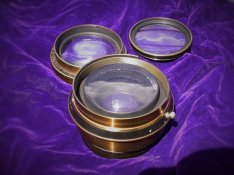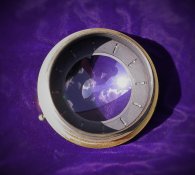Old-N-Feeble
Member
HELP: Cooke Series VI Portrait Lens Disassembly and Cleaning
I recently acquired a 13" Cooke Series VI Portrait lens in overall very nice condition. The glass is perfect and the aperture is in good shape. However, I need to disassemble it to clean the aperture assembly because it's a bit gummy. I can easily remove the front and rear lens cells but can't see how to break it down further. Does anyone have some helpful tips?
BTW, what's this lens worth these days in perfect working order with flawless glass? Ebay prices are all over the place but even those in unknown mechanical condition with somewhat damaged glass are fetching $400-500 and others (not selling) are listed at $2000-4000... my guess is those are a bit optimistic.
I recently acquired a 13" Cooke Series VI Portrait lens in overall very nice condition. The glass is perfect and the aperture is in good shape. However, I need to disassemble it to clean the aperture assembly because it's a bit gummy. I can easily remove the front and rear lens cells but can't see how to break it down further. Does anyone have some helpful tips?
BTW, what's this lens worth these days in perfect working order with flawless glass? Ebay prices are all over the place but even those in unknown mechanical condition with somewhat damaged glass are fetching $400-500 and others (not selling) are listed at $2000-4000... my guess is those are a bit optimistic.

Last edited by a moderator:














